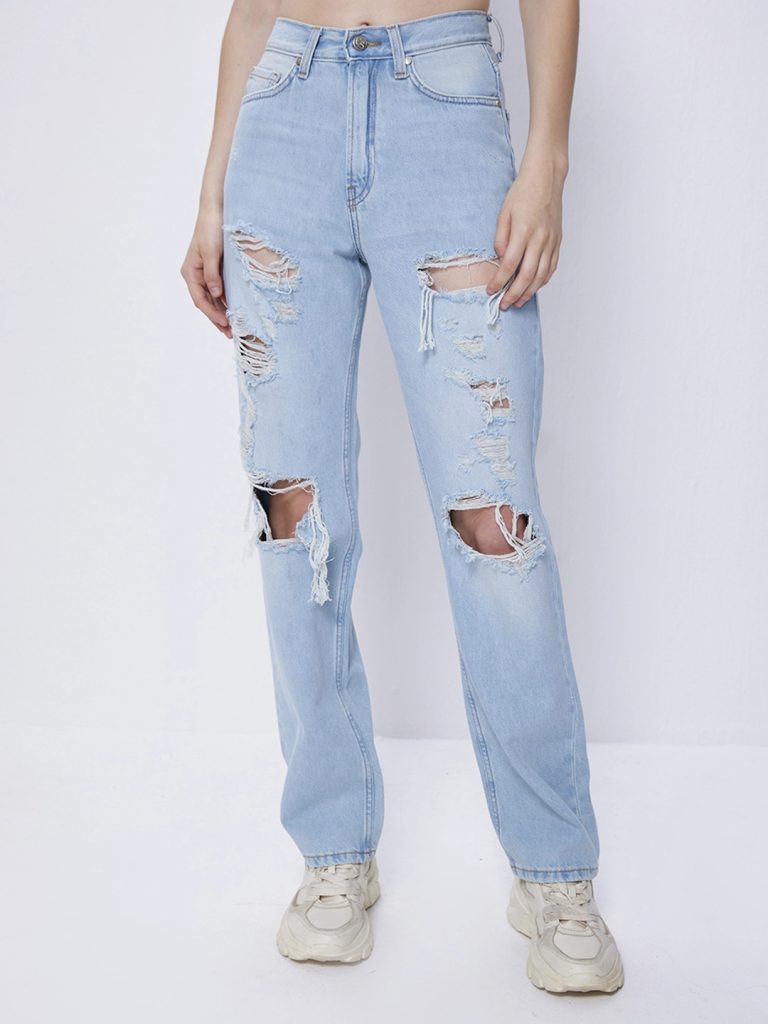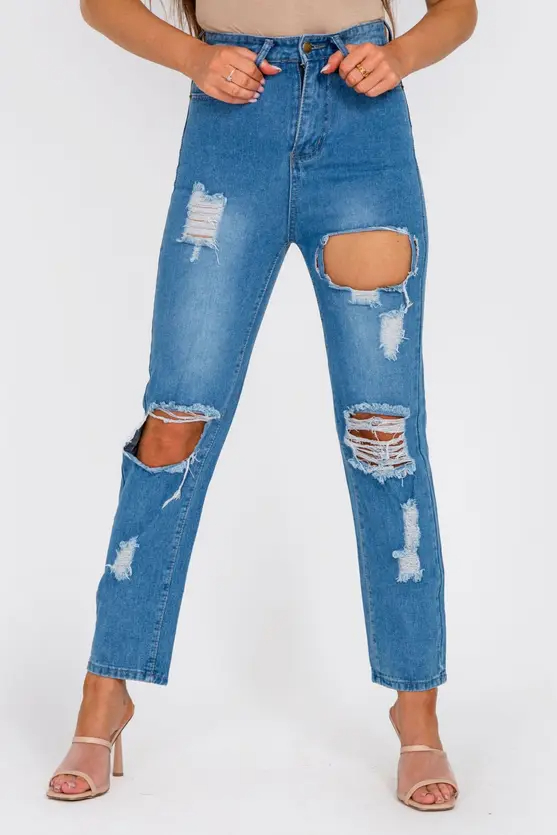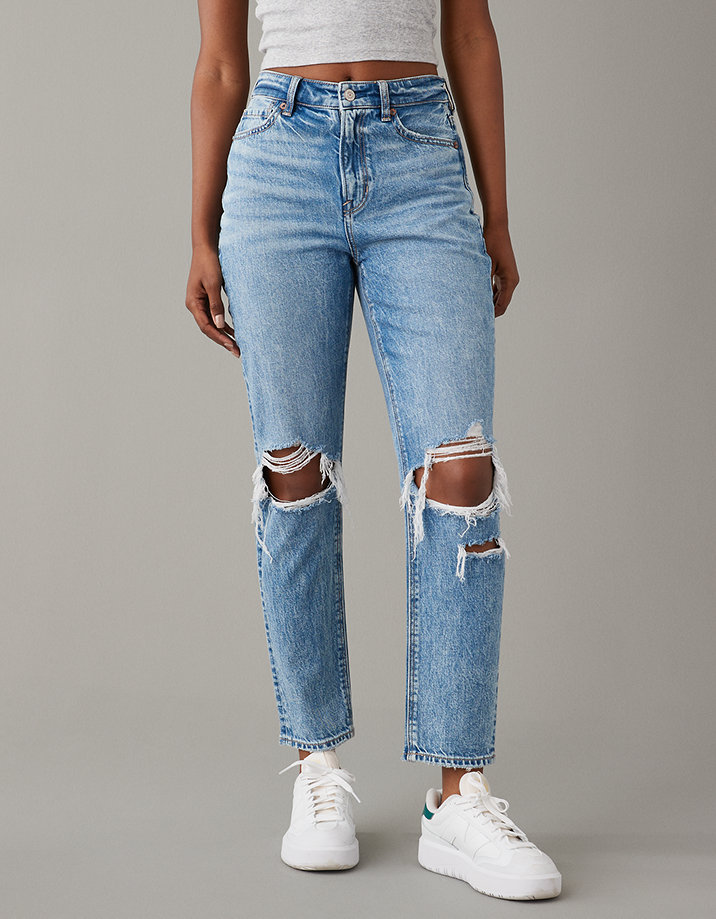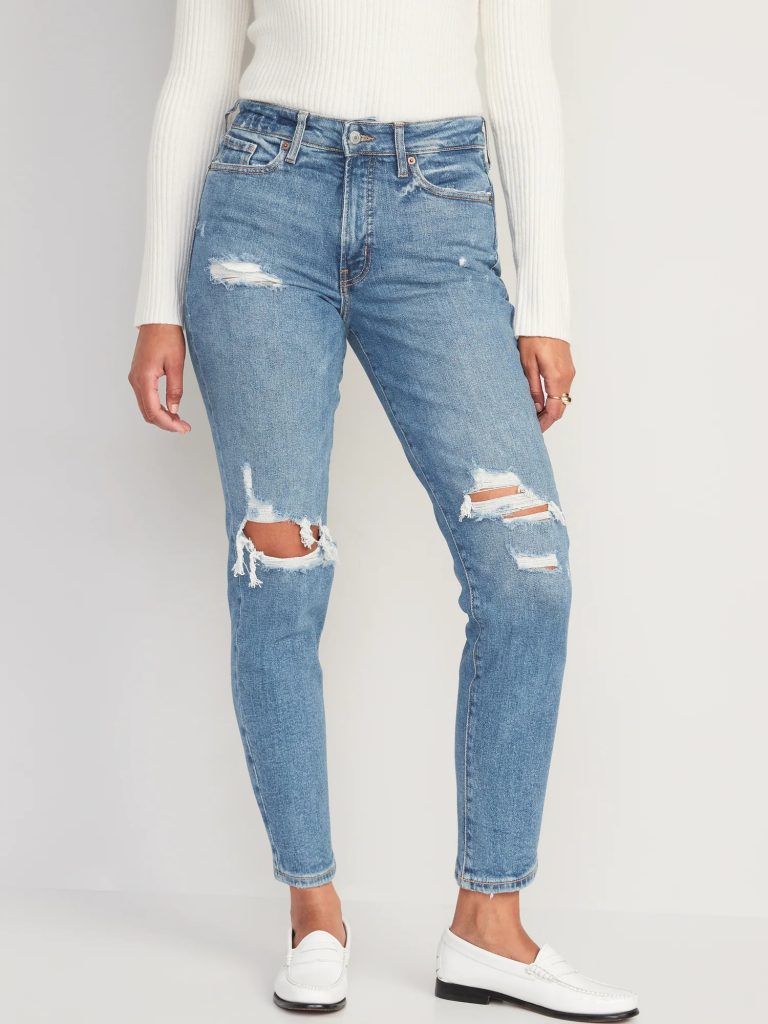How to fix ripped jeans? Repairing ripped jeans is not only a way of saving and environmentally friendly lifestyle, but also gives your clothes a unique personality and retro feel.

1. Material preparation
First, you need to collect the necessary repair tools and materials: needle and thread (you can choose a thread with a color similar to or in contrast with the jeans), sewing machine (if possible, you can sew by hand), scissors, patch fabric (can be other old denim, leather or patterned fabrics), and an iron.
2. Preprocessing
Clean holes: Wash the damaged area in cold water and dry to make sure there are no stains or loose fibers. Check the size and shape of the hole and decide whether to enlarge it to create a new pattern if necessary.
Trim the edges: Use scissors to carefully trim away any rough threads and fibers along the edges of the holes to make the edges neat.
3. Choose a repair method
Simple stitching: For small holes, you can directly sew inside or outside with a needle and thread. The inner seam is densely sewn inside the hole to try to maintain the appearance of the original fabric; the outer seam uses stitching as a decorative element and is deliberately highlighted.
Patch method: Choose a suitable patch fabric and cut a piece of fabric slightly larger than the hole according to the outline of the hole. Then place it on the back of the hole, fix the position with a pin, and start sewing from the front. You can use overlocking, flat stitching or fancy stitching to reinforce and decorate.
Creative design: For users who pursue personalized effects, they can embroider patterns around the holes, or add sequins, buttons and other decorations to make the holes a unique highlight of the pants.

4. Sewing steps
When hand stitching with a needle and thread, it is important to keep the stitching tight and even to prevent further fraying. If you are using a sewing machine, adjust the stitch length and tension to avoid skipping stitches or uneven stitching.
For the patch method, start from the center of the patch and sew outward to ensure that the patch adheres firmly to the pants. Once complete, you can choose whether to trim off the excess patch edges or leave them intentionally for decoration.
After completing the repair, use an iron to iron the sutured area at low temperature to make it smoother and more beautiful, while also strengthening the fastness of the suture line.
5. Care and maintenance
When wearing and cleaning the repaired jeans, special attention must be paid to protecting the repaired area. Hand wash or machine wash on gentle cycle if possible and dry out of direct sunlight which can cause fading or hardening. Regularly check whether there is any disconnection or looseness in the repair area, and repair it in time.

How to choose ripped jeans
As a fashion item, ripped jeans are very popular among young people because of their unique design style and casual wear effect. When choosing ripped jeans, you need to consider not only fashion trends, but also factors such as personal body characteristics, wearing occasions, and material quality.
Style selection:
There are various hole designs in ripped jeans, including large holes, small holes, frayed holes, irregular holes, etc. For those who are trying ripped jeans for the first time, you can choose a design with smaller holes and more conservative locations, such as small holes at the knees; while for those who are pursuing a trendy personality, you can choose a design with larger holes or more distributed holes. Designed for casual use. At the same time, you should also pay attention to the type of pants. Straight-leg, wide-leg, tight-fitting and other styles all have corresponding hole designs. You should choose the style that can best modify your body shape according to your leg shape.
Color and matching:
The color of ripped jeans is generally classic blue, but also available in black, white or other colors. Dark colors are more slimming and suitable for all body types; light colors are more suitable for spring and summer and appear more refreshing. In terms of matching, ripped jeans can be paired with a variety of casual clothing such as T-shirts, shirts, sweatshirts, etc. For shoes, you can choose sports shoes, Martin boots or canvas shoes to form a fashionable and comfortable street style.
Sizing and cut:
When buying ripped jeans, the size must fit properly. Too loose or too tight will affect the overall effect. When trying them on, make sure you can move freely when sitting and standing, and that the length of the trousers is appropriate so that there will be no discomfort due to the location of the holes. In addition, observe whether the waistband of the pants is suitable. If it is too tight, it will affect the comfort, and if it is too loose, it may affect the appearance. High-waisted ripped jeans can visually lengthen the leg lines. People who are short or want to create long legs should give priority to them.

Fabric and quality:
High-quality denim fabric is the key to ensuring the durability and comfort of ripped jeans. Choose denim fabric with a certain thickness and elasticity, which has good wear resistance and can better maintain the shape of holes. Check whether the sewing process is fine and whether the edges of the holes have been treated to prevent threads from coming off. In addition, some brands will add decorative patches inside the holes to increase the design and durability.
Personalized needs:
If you want your ripped jeans to be more personal, look for ones with hand-ruined details that make each pair a unique work of art. Or you can choose DIY and make holes that suit your personal aesthetic and style.
Through the above detailed repair process, a pair of ripped jeans that may have been discarded can be transformed into a new pair, which is both practical and fashionable, embodying the concept of green environmental protection and the unique art of living.
